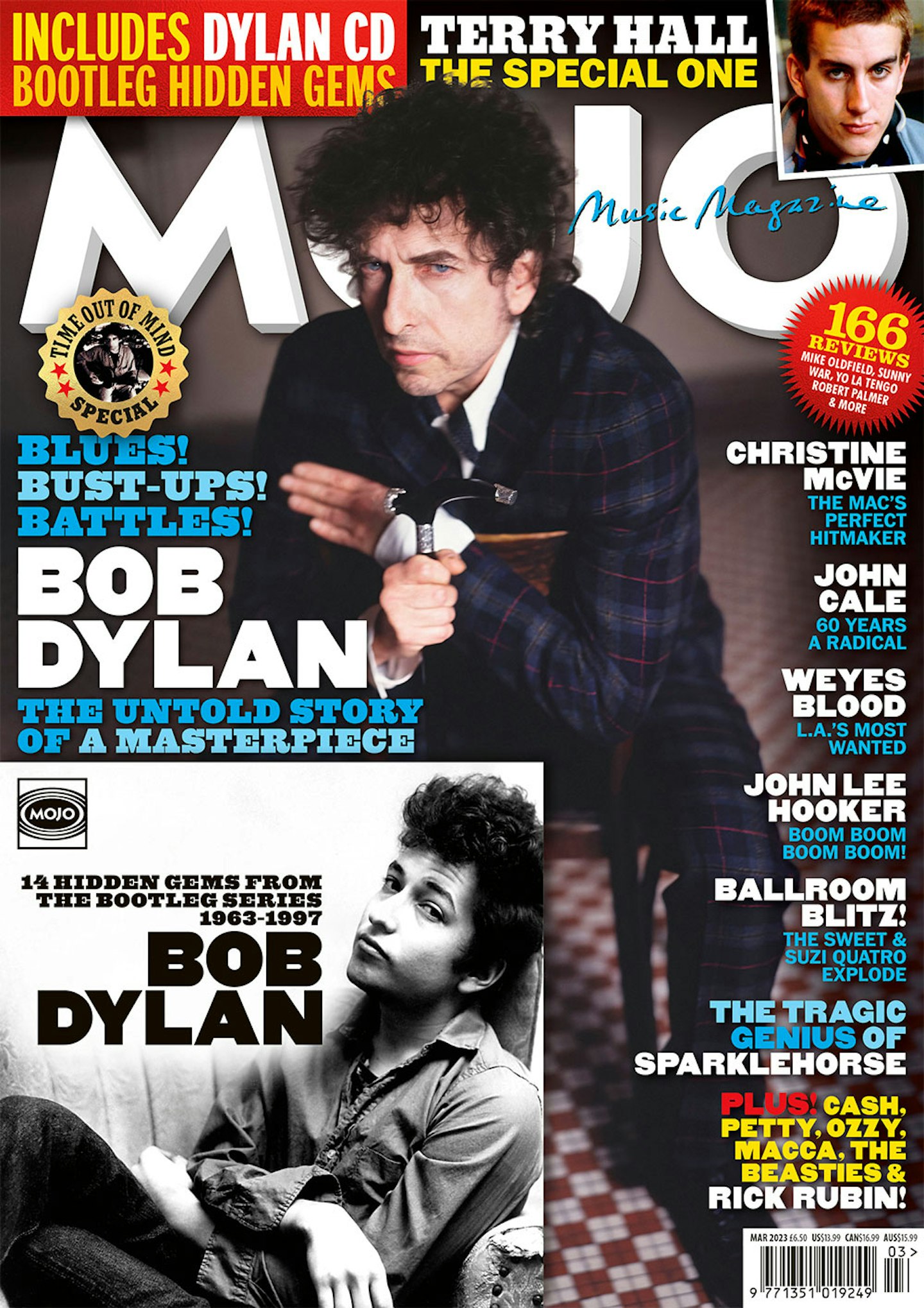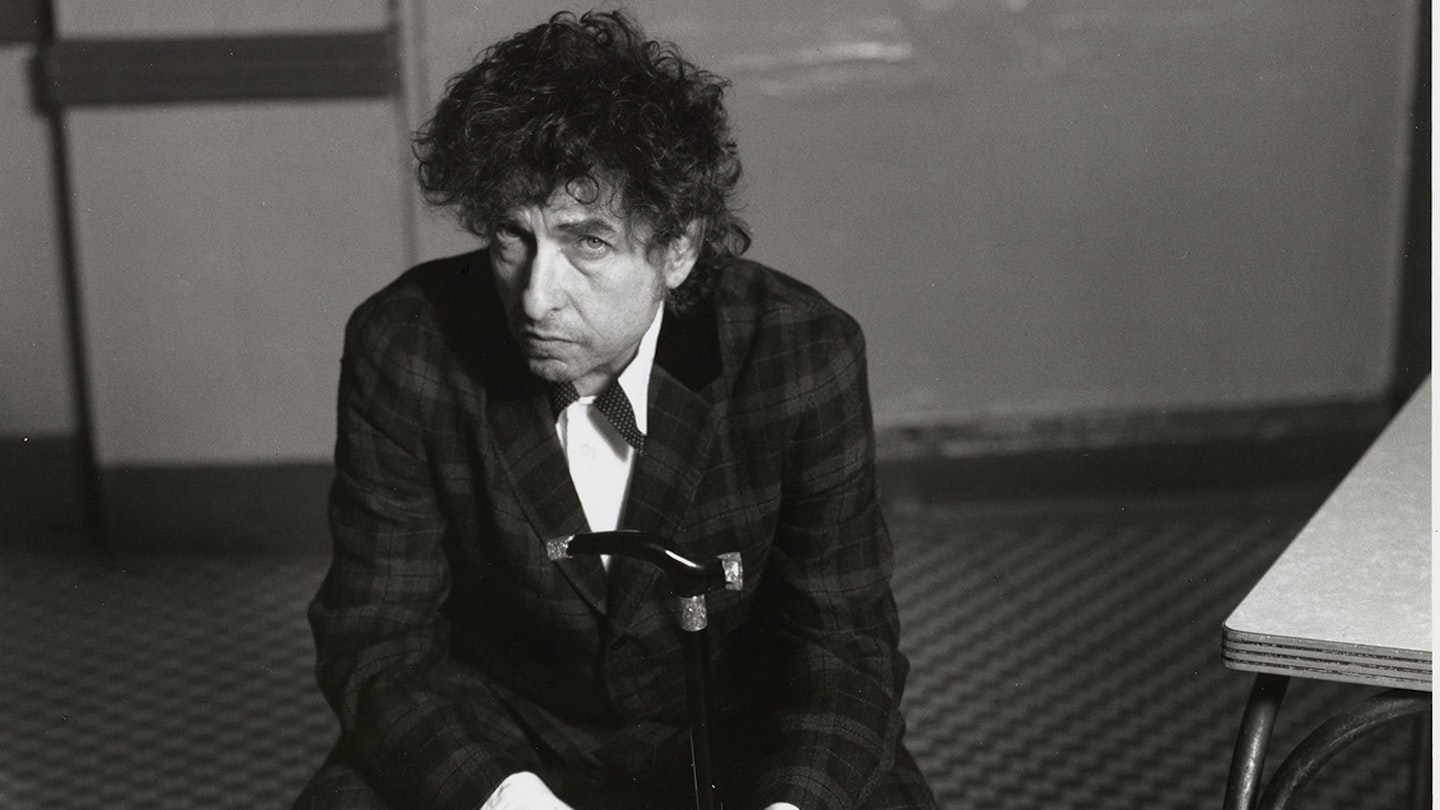Time Out Of Mind was the album that rescued Bob Dylan. Haunted by lost love, wracked by creative divisions, shadowed by health fears, it remade the blues for modern times and launched Dylan into the final quarter of the 20th century. In this extract from MOJO’s exclusive cover feature about the making of Dylan’s mid-90s masterpiece, producer Daniel Lanois and engineer Mark Howard reveal how Beck, then riding high after the release of Odelay, provided an unlikely, if ultimately unsuccessful inspiration to the then 55-year-old songwriter…
IN THE EARLY AUTUMN OF 1996, DANIEL LANOIS AND BOB DYLAN RENDEZVOUSED IN A NEW YOK HOTEL ROOM AT THE SOUTHERN EDGE OF CENTRAL PARK. Dylan read from a ream of lovelorn lyrics, reportedly written while snowbound on his Minnesota farm the previous winter. These were the words Lanois had wanted back at Teatro, when Dylan was feeling out the room and the relationship. Dylan asked if he had a record, and Lanois answered yes. “Off we went,” says Lanois.
Dylan had one more question, engineer Mark Howard remembers: “‘What do you think of this kid called Beck? I want to make a record the way he makes records.’”
That June, Beck had released Odelay, its loops and samples slipping ideas from hip-hop and electronica into the rock charts. It was a novel way to repurpose the past, to look back while moving forward. Lanois had some experience with the method, too, thanks to very recent work with Luscious Jackson, whose Fever In Fever Out LP he co-produced with New York native Tony Mangurian.
During their hotel meeting, Dylan had supplied a listening list of blues and R&B touchstones – sides by Charley Patton, Little Willie John, Little Walter, Slim Harpo. “They had a sense of urgency, as if they were capturing a moment,” Lanois remembers of the selections. “It was like something was already happening.”
"It was pure blind mysticism..." Inside the making of Bob Dylan's Rough And Rowdy Ways
Blood On The Tracks Revisted: MOJO traces the anatomy Dylan’s agonised masterpiece
The records, and the Beck mention, gave Lanois an idea. He ducked into Mangurian’s threadbare studio on Spring Street and explained it. Lanois and Mangurian would drum along in tandem to Dylan’s playlist, grab the most interesting eight or 16 bars with Mangurian’s Roland sampler, then turn the original tune down. The 10 loops were, Lanois says, “serious vibes – shuffles and slow midnight grooves”.
As September slid toward October, Dylan was off the road for two months. Mangurian headed west with the loops for two weeks at Teatro, a former “comedic porn” theatre still littered with vintage movie posters. If Dylan loved Beck’s philosophy and finished product, he soon learned he did not relish his process: “He did not want to sit around for 10 minutes, waiting for loops to be put into song form,” remembers Mangurian, laughing. “He just wanted to play.”
The hairs went up on my arms…
Mark Howard
Mangurian, then, hopped on drums, with Lanois on bass and Dylan flitting between piano and guitar. Mangurian dug into the kit as if pounding out a boom-bap beat. Dylan leaned into lyrics with Pentecostal verve, a gusto that reminded Mangurian of the Plastic Ono Band. They stuck to one take, maybe two, sometimes capturing only a verse and chorus. The idea was to shape fragments into full songs later, “like the Beastie Boys or Beck”.
Lanois and Howard agreed they’d captured new magic with a hiccupping gospel take of a number dubbed Can’t Wait. With Dylan mauling the piano, and his voice agitated but spectral, the trio sounded haunted and primitive. “The hairs went up on my arms,” Howard says, “a special thing.” Sitting in his LA parlour with MOJO in 2022, Lanois plays air drums as he scats that original beat, howling the melody. “It was just on fire,” he says. “I wanted that groove on the record.”
In the end, Dylan didn’t…
“Time Out Of Mind Was Me Getting Back In And Fighting My Way Out Of The Corner…” Read MOJO’s exclusive Bob Dylan feature about the making of his mid-90s masterpiece, Time Out Of Mind, in full.

